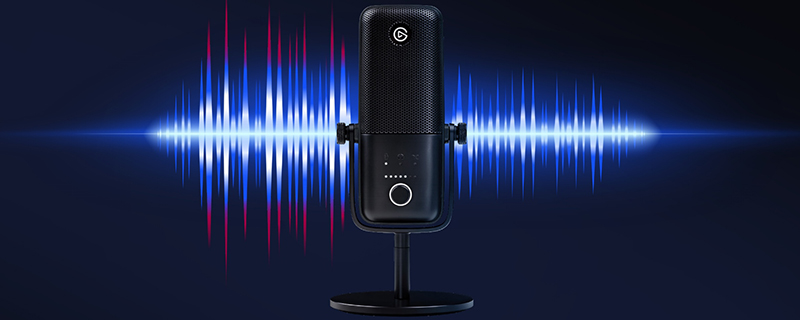Elgato Wave 3 Microphone Review
Conclusion
Whenever you get into the world of microphones you’re having to approach it from two different angles. Firstly, how it functions as a better option than what you have, and how it compares to microphones in a similar price bracket. If you’ve been making do with a headset microphone, or the one on your phone or whatever, then clearly the Elgato Wave 3 is a better option. Any time you take a step up in quality you’ll be better off, and a lot of what the Wave 3 brings to the party is excellent within its price bracket. Unlike keyboards and headsets though a microphone isn’t just about the actual microphone bit, but limiting the noise created by everything else. Normally on a headset microphone it’s so tiny and designed to work an inch from your mouth that it can – everything being relative – barely pick up your voice much less any extraneous noise. The moment you upgrade to a significantly better microphone like the Wave 3 you’ll be aware of how much noise there is around you all the time.
The Wave 3 is designed squarely at the streamers, and particularly those who use OBS. Currently the Wave Link software doesn’t provide any noise cancelling ability, so you either have to use OBS, invest in a dedicated plug-in, or utilise the RTX audio on RTX graphics cards. Hardly the best solution, particularly as we found it picked up a surprising amount of reflected noise and background stuff even in a fairly quiet room. Either Elgato need to add the noise filtering to their Wave Link software, or you need to have a very specific set of hardware to use third party solutions. Because on a GTX or AMD GPU, or if you use Skype, Zoom, Audacity or almost anything else you will need to eggbox your walls and kick the cat out the room. Hopefully this will soon be rectified.
Clearly the Elgato Wave 3 is taking on a trio of obvious other models on the market, but the world of microphones is so vast that it quickly steps into the world of more serious options. However, let’s stack it up against the three main “from a peripheral brand” competitors; the HyperX Quadcast, the Razer Seiren X and the ROG Strix Magnus. In pure numbers terms the HyperX and Magnus can almost immediately be discounted. Because they can also record whole rooms in 360° they have smaller condensers. You’ll only be using cardioid for voice – and indeed recording guitars and the like – so the compromise they have to make to achieve that functionality isn’t worth it for the end user. The Seiren X has a bigger capsule which should give it better performance, although the numbers don’t really back that up. It does have a built in shock mount, but like any built in feature there is a reason that all the external ones exist and it doesn’t particularly work in practise. That is also a claim which can be levelled against the pop filter on the Wave 3.
Pop filters are designed to lessen the plosive problem on microphones. The old Peter Piper picked a peck thing is still a fantastic test for any microphone, and will demonstrate why any music video you see recorded in the booth the singer has both an external pop filter (the circular thing in front of the mic) as well as having it mounted in a shock mount. Internal ones aren’t all that. Better than nothing, for sure, but not a solution. Elgato know this too which is why they sell add-on pop filters and shock baskets. The stand is solid, but that brings its own problems. They recommend you have the microphone about eight inches from your mouth. We don’t know about you but our mouths aren’t in our stomachs. Plus if you’ve got it on your desk you better not type, or touch the desk, because that shock will travel up the stand and create bangs that don’t sound professional. So yes, the Wave 3 is £159, but you almost have to invest in the pop filter and anti-shock mount, and that will necessitate a dedicated microphone stand. Suddenly the price is – even with a cheap Chinese nobrand stand – around £250 to make the most of the Wave 3. Remember our mention of the Rode NT-1A on the first page? That’s not USB so requires an XLR to USB interface. You can get one of the best vfm ones around, the Focusrite Scarlett Solo, with the Rode NT1-A which has a pop filter and anti-vibration mount, for around £260. It’s barely any more money but will annihilate the Wave 3 in audio quality as well as ease of use.
Clearly though, that’s not a plug and play solution. We’re just saying that this particular plug and play solution in the form of the Elgato Wave 3 will crush your current audio setup, and yet also quickly reveal other problems that come from having such a wonderfully sensitive microphone and require further expenditure. But maybe you don’t care about that, maybe you just want a good quality, promise I won’t bang the desk and don’t mind stooping when I talk, USB microphone. Because the problems inherent in this design aren’t unique to the Wave 3 but exist with any similar product like the aforementioned Razer, HyperX or Blue Yeti models on the market. If you’re judging the Wave 3 against it’s like-for-like competition it’s more sensitive, has a bigger capsule than all but the Razer and the built-in gain and monitoring controls are very handy. Nothing in the literature says if the monitoring is zero latency, but it certainly sounded close enough to our ears. If you’ve been going down the road of using all Elgato products for your streaming setup then its ability to blend in with your Stream Deck increases your control and ease of use in one simple step too.
The Elgato Wave 3 is a good first step into the world of better quality audio and can transform your voice if you have the hardware and software to use it to its fullest. Just don’t blame us if it sends you down the audiophile rabbit hole.
Discuss the Elgato Wave 3 Cardioid USB microphone in our OC3D Forums.




